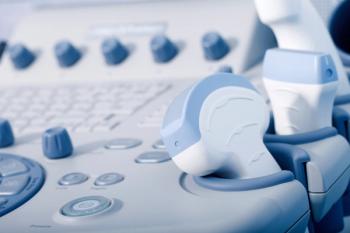
Endometrial Preparation in Frozen Embryo Transfer Cycles
D17 ET - After ET, 14th day β hCG If pregnancy is present, E2 ve P dose administered until placental autonomy. Muasher;1991
Transdermal E2 (Estraderm TTS 100) (Patch should be changed every two days) After Down reglasyon;(e.g.; LA 0.5mg/g sc)
Luteal support P n oil 50mg IM. LA is discontinued.
D17 ET - After ET, 14th day β hCG If pregnancy is present, E2 ve P dose administered until placental autonomy. Muasher;1991
D1
D1 Mikronised E2 Estrafem (6mg/d 3/1 p.o) (In previous schemes 2mg/d Pattison; 1992, Queenan; 1997.) (Today, E2 treatment is started on cycle day 25 of the previous cycle).
The aim of high dose E is supression of gonadotropic cells, folliculogenesis and the prevention of LH peak.) D7 E2, End. Thickness (End ≥ 8mm) luteal support (Mic.P 3x300mg vaginal)
D7 - Luteal sup. P ≥ 6nmol/L V D20 End. thickness < 8 mm cycle cancellation) Simon A;1999.
48 - 72 hours after P > ET 14th day after ET > β-hCG if pregnancy is present, this dose is given until placental autonomy. The rate of cancellation is low, the probability of premature P secretion is small. Conclusion : 6mg/d Mic. E2, gonadotropin secretion is sufficient for prevention of spontaneous ovulation and endometrial preparation. Simon A;1999.
Serum E2 level is unimportant in decision for ET. Only one serum P level measured with USG when starting P is enough for decision. If endometrial thickness is adequate and premature P secretion is absent, P support may continue after ET. Simon A;1999
D1 4mg/g E2 Valerate
The high PR observed after transferring blastoctsts on the 5th day of endometrial exposure to P in controlled E2 and P replacement cycles. Lelaider C; 1995.
Endometrial preparation with exogenous E and P without GnRH-a is simple, easy and efficient in frozen ET cases with active ovary.
Jaroudi;1991
Pattison HA; 1992
Lelaider C; 1995
Queenan JT; 1997
Simon A; 1999;
Dal Prator L; 2002
It seems to be appropriate to start progesterone administration before transfer in oocyte donation programmes as well as transfer of cryopreserved / thawed cell as soon as the endometrium is developed sufficiently (8mm, trilaminar pattern), and to perform the embryo transfer not before day 3-4 of progesterone treatment, i.e embryo development on day 2-3. Nawroth F;2005.
A. LA + Transdermal E2 patch
B. LA + Oral Mic. E2
C. Oral Mic. E2
Down regulation with GnRH-a is not necessary. Regimes not programmed with GnRH - are simple more economical Yee;1995.
A. Naturel cycle (Luteal P support)
B. Artificial preparation (GnRH-a + E2 + P)
C. Ovarian Stimulation (GnRH-a + hMG + hCG + p)
There is no significant difference in terms of IR.
Vasilios T; 1996, Tanos V; 1996.
A - 400 mcg buserelin acetate + mg E2 valerate + (800 mg/d P)
B - 6 mg E2 valerate (800 mg/d P) Medicated frozen embryo replacement cycles timed by endometrial thickness measurement alone without monitoring or suppression of ovarian activity are associated with reduced outcome. El-Toukhy
Significant effect - Patient age, number of embryos replaced
No significant effect - Duration of storage of embryos Stimulation type cause of infertility (Avery and Brinsden;1997)
Embryo quality evaluated morphologically was the most important clinical factor for successful implantation of cryopreserved - thawed ET.
Kondo I; 1996
Good quality of frozen thawed embryos and the trilaminar sonographic pattern of endometrium may be reliable predictors of success in pregnancy. Zhu Y; 2001.
For thin endometria, there was not a observed trend suggesting lower PRs. Jerome HC;2004
Neither the mode endometrium preparation nor the length of cryostorage appears to affect the outcome of frozen ET cycles. Kolibianakis EM; 2003
The type and administration route of the steroid form has no effect on the success of the frozen ET cycles.
Endometrial preparation is cheaper with natural cycles. It can not be used in menstrual irregularity. Therefore, it should be preferred in younger cases.
It is not a suitable choice when better control and flexibility in timing is desired.
The need for precise determination of ovulation time may lead to anxiety.
Cancellation rate 6%. In natural cycles, increased age decreases fecundity.
Hormonal controlled cycle; In cases with functioning ovary but who have anovultary or irregular cycles, it is necessary for adequate endometrial preparation.
Therefore, as programmed E2 and P replacement can be performed with GnRH-a, it can be carried out without this program.
While previously it was believed that with GnRH-a employment at the beginning, synchronization between embryo and endometrial development was simplified, the need for USG and endocrin monitorization decreased, cancellation rate was reduced and transfer time could be controlled more easily.
At present; It has been established that endometrial preparation with exogenous E and P without using GnRH-a is simple, easy , effective and economical in frozen ET cases wth active ovaries.
It is known that PR and IR in these cycles are the same with frozen ET cycles programmed with GnRH-a and naturel cycles
The type and administration route of the steroid form has no effect on the success of the frozen ET cycles.
Good quality of frozen - thawed embryos and the trilaminar sonographic pattern of endometrium may be reliable predictors of success in pregnancy.
Embryo quality evaluated morphologically was the most important clinical factor for successful implantation of cryopreserved - thawed ET.
Neither the mode of endometrium preparation nor the length of cryostorage appears to affect the outcome of frozen ET cycles.
Newsletter
Get the latest clinical updates, case studies, and expert commentary in obstetric and gynecologic care. Sign up now to stay informed.










